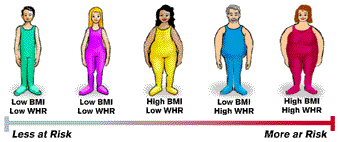Surprisingly High Cases of “Lean NASH”
While there is a clear causal relationship between obesity, NAFLD, and NASH, studies have shown that there are a significant number of cases of NASH affecting non-obese individuals. In a recent study up to 15% of those diagnosed with NASH were not considered obese. These cases are referred to as lean NASH or NOSH (non-obese steatohepatitis).
And there is a real concern for these types of cases because apparently these variations of the disease can have even higher mortality and serious morbidity rates. Read simply; if you are not obese and get diagnosed with NASH you have an even greater risk of serious life-threatening symptoms.
I’ve written previously about the realities that overweight and obese individuals must grapple with in regards to liver health and the propensity for diseases like NAFLD and NASH to develop. I’ve also written about how we must confront those that would seek to belittle or deny the health risks such heavier people are faced with in the name of normalization. However, the fact is that you are at much higher risk for NASH if you are overweight, it is not guaranteed, and you are likewise not safe from developing it if you are a more “normal” weight.
Some of the disparities can be attributed to risk differences between the most commonly used metric for measuring obesity, BMI, and an alternative measure known as waist-to-hip ratio, or WHR. (see BMI vs WHR) The WHR is becoming an increasingly preferred measurement for health risks as studies have shown that visceral fat (fat stored around the major organs in the belly) is significantly more hazardous than other types, especially with regards to fatty liver development. It’s entirely possibly to have a normal or even low BMI but a relatively high WHR, increasing such risks.

However, WHR divergences from BMI alone cannot account for the significant number of cases of lean NASH that have been observed, often in individuals with low BMI and WHR. Nor can it explain the ethnic determinants that are being exposed. For example, lean NASH cases in the USA are significantly higher among Hispanics than all other groups. Worldwide, Asia seems to have a higher concentration of lean NASH subjects as a whole. A myriad of explanations have been proposed, from ethnic food choices to genetics to poverty-driven prenatal malnutrition in some of these areas.
The reality is that researches and doctors are still trying to understand how lean NASH develops and there is even less of an understanding of the etiology than traditional NASH cases where obesity is an obvious factor. While we learn more about NASH and raise awareness of it we must not forget to focus on the outliers where the simple explanations don’t fit.
